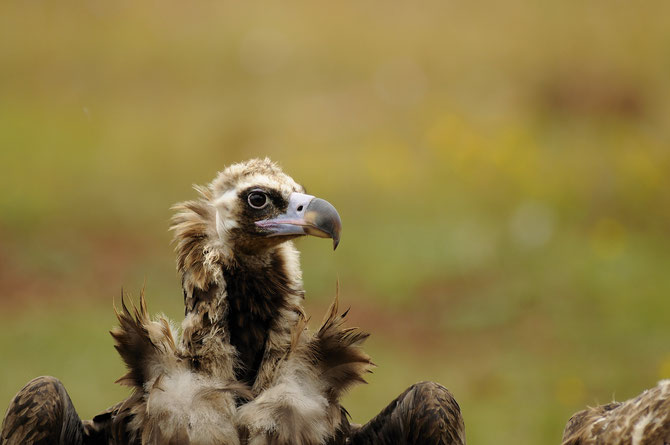
On Thursday 6 February, another Cinereous Vulture returned back to its natural environment after being rescued and rehabilitated! Ahead of its release, the vulture was equipped with a GPS tag provided by us, and we will closely monitor its movements to see how the vulture is doing in the wild.
Rescue
In early December last year, the Cinereous Vulture was found weakened and weighed only 4kg in Ferreira do Alentejo in southern Portugal. The vulture needed to regain its strength to be able to survive on its own again. So it was rescued and transferred to RIAS – Centro de Recuperação e Investigação de Animais Selvagens, Olhão in the Algarve to be rehabilitated.
Rehabilitation
The vulture was in recovery for almost two months! The RIAS team managed to successfully nurse it back to health, reaching a weight of 7kg and was able to fly perfectly.
Release
Ahead of its release, the vulture was ringed and tagged with a GPS transmitter provided by us here at the Vulture Conservation Foundation (VCF) to monitor its movements. On 6 February, it was time for the vulture to return to the wild. We decided to release it at Herdade da Contenda, which is a Cinereous Vulture breeding colony in eastern Alentejo. Once the cage was opened, the Cinereous Vulture took off and started flying immediately! Let’s hope that it has a bright future ahead in the wild.
This was yet another fantastic collaboration to give a second chance to another Cinereous Vulture to live in the wild! Great work and commitment by the RIAS team who carefully nursed the Cinereous Vulture back to health. Big thanks to the ICNF park rangers for transporting the vulture to RIAS and for its release.
Following Cinereous Vulture in Portugal
In 2018, we provided the GPS tag for the first Cinereous Vulture to be tracked using a GPS transmitter in Portugal and we continued to tag more birds ever since. This information provided by tracking these birds is vital to reveal any threats the birds may face as the species continues to make a comeback across Portugal. The insight from this data will be useful for conservationists to enable them to carry out actions to reduce the risk the birds face and help support the species comeback. You can follow these birds online by visiting the maps that are generated from the data collected from the GPS transmitters.
Cinereous Vultures in Portugal

Cinereous Vultures became extinct as breeding species in Portugal in the 1970s, mostly due to the use of poisoned carcasses targeting unwanted predators. An increasing population in Spain saw the species first return to breed in central Portugal (Tejo Internacional) in 2010 (where now there is a small colony of about 10 pairs), and then in north-eastern Portugal (one single pair). Then in 2015 they also started breeding in southern Portugal at there is a population of around eight breeding pairs, in Herdade da Contenda, a large estate owned and managed by the Moura Municipality. In total there are around 25 breeding pairs in Portugal.
Sign up to our newsletter and never miss any vulture news!




